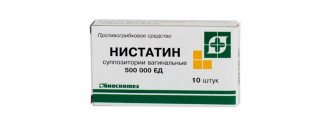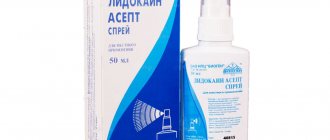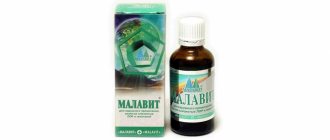- Instructions for medications
- Dialek
Scientific and Production Unitary Enterprise Dialek, Republic of Belarus INSTRUCTIONS (information for specialists) on the medical use of the drug
- Compound
- Pharmacotherapeutic group
- Pharmacological properties
- Indications for use
- Directions for use and dosage regimen
- Side effect
- Contraindications
- Overdose
- Precautionary measures
- Interaction with other drugs
A16.
OTHER REMEDIES FOR THE TREATMENT OF DISEASES OF THE DIGESTIVE TRACT AND METABOLIC DISORDERSHerbal remedies (a16ax) General characteristics : Transparent liquid of yellowish-brown color. During storage, sediment may form.
Compound
| Compound | For 30 ml: | For 50 ml: | |
| Chamomile flowers | 4.2 g | 7 g | |
| Marigold flowers | 2.1 g | 3.5 g | |
| Yarrow grass | 2.1 g | 3.5 g | |
| Ethyl alcohol 70% | sufficient quantity to obtain 30 ml of extract | sufficient amount to obtain 50 ml of extract | |
special instructions
Animals at increased risk of developing excessive hypotension should be closely monitored by a veterinarian after taking the first dose, as well as after increasing the dose of the drug, especially in the first 2 weeks of treatment. In case of development of hypotension, ataxia, tachycardia, arrhythmia and angina, treatment with Vazotop R must be discontinued. Diuretics and a diet with a low sodium content enhance the effect of the drug, therefore, in order to avoid the development of severe hypotension, accompanied by apathy, ataxia, fainting or acute renal failure, do not exceed the dose of diuretics and prescribe a diet with a low sodium content. Concomitant use with potassium-containing drugs is not recommended, as this can lead to the development of hyperkalemia in the body.
Directions for use and dosage regimen
In dentistry it is used topically.
Before use, 1 teaspoon of the medicine is diluted in a glass of warm boiled water. For stomatitis and other diseases of the oral mucosa, rinses (1-2 minutes) or applications of the drug (15-20 minutes) are prescribed 2-3 times a day for 2-5 days. When treating marginal periodontium, after removing tartar and curettage of periodontal and bone pockets, thin turundas with a drug solution are introduced into the pockets for 20 minutes. The procedure is carried out daily or every other day (4-6 times).
In gastroenterology, the drug is used orally and in the form of microenemas.
Use 1/2 cup of the drug solution internally at the rate of 1 teaspoon per glass of warm boiled water for 30-40 minutes. before meals or after 40-60 minutes. after meals 3-4 times a day.
For microenemas - 1 teaspoon of medicine per 50-100 ml of warm boiled water (after a cleansing enema) 1-2 times a day. The duration of the course of treatment is determined by the doctor individually, taking into account the characteristics of the disease, the achieved therapeutic effect and tolerability of the drug.
Composition and release form Vazotop R (28 tablets)
Vazotop R contains ramipril as an active ingredient and auxiliary components: hypromellose, pregelatinized starch, microcrystalline cellulose, powdered beef flavor, sodium stearyl fumarate, colloidal silicon anhydride and iron oxide. They are tablets for oral administration, oblong in shape with a groove in the middle. Tablets, depending on the amount of ramipril, have different colors: beige - 1.25 mg, yellow - 2.5 mg and pink - 5.0 mg, respectively. Each half of the tablet is marked with the amount of active substance on one side and the Latin letter “V” on the other. 28 tablets are packaged in plastic jars with a moisture-absorbing membrane and a rotating lid. Pack 3 cans in cardboard boxes.
Contraindications
- hypersensitivity to the components of the drug, as well as to plants of the aster family (Asteraceae), such as arnica, ragweed, tansy, wormwood, aster, chrysanthemum.
- period of pregnancy and lactation.
- children's age up to 12 years.
- peptic ulcer of the stomach and duodenum, diseases of the gallbladder and biliary tract, occlusion of the biliary tract.
- liver diseases, alcoholism, epilepsy, traumatic brain injury and other brain diseases with a decrease in the seizure threshold (when taken orally and in the form of microenemas).
Side effects
In some cases, while using the drug, an animal may experience side effects from the respiratory system (sinusitis, rhinitis, bronchospasm), from the gastrointestinal tract (nausea, dyspepsia, vomiting, diarrhea, constipation, dysphagia, loss of appetite), from nervous system (convulsions, neuralgia, neuropathy, paresthesia, tremor). If side effects occur, use of Vasotope R should be stopped and consult a veterinarian. Exceeding the dosage by more than 10 times (2.5 mg/kg of animal weight) is normally tolerated by young animals. In rare cases, signs of hypotension are observed, manifested in the form of apathy and ataxia. If such symptoms occur, the prescribed treatment must be suspended until the animal’s condition stabilizes. After this, treatment is resumed at half the dose. The use of an ACE inhibitor in dogs with symptoms of hypovalemia and dehydration may lead to the development of acute hypotension. In such cases, it is necessary to restore the water-salt balance in the animal’s body and postpone the use of Vasotope R until the condition stabilizes.
Precautionary measures
- Contains at least 65% ethanol. A single dose of the drug (1 teaspoon) contains at least 3.25% ethyl alcohol. Due to the ethyl alcohol content, it is not recommended to take the medicine for a long time.
- If symptoms persist or worsen while taking the drug, you should consult a doctor.
- The drug is not recommended for use during pregnancy and lactation due to the lack of adequate data on the safety of the use of these herbal remedies and alcohol content.
The ability to influence the reaction rate when driving vehicles or other mechanisms
The medicine contains ethyl alcohol! During the treatment period, it is necessary to refrain from driving vehicles and engaging in other potentially hazardous activities that require increased concentration and speed of psychomotor reactions.
Pharmacological properties
Vasotope R is an antihypertensive drug. Ramipril, which is part of the drug, is an angiotensin-converting enzyme (ACE) inhibitor, which, by suppressing the synthesis of angiotensin II, reduces its vasoconstrictor effect and stimulating effect on aldosterone secretion, and also inhibits the breakdown of bradykinin. Ramipril does not have a significant effect on renal blood flow (in some cases it increases it) and on the glomerular filtration rate. The drug does not cause the development of compensatory tachycardia. The maximum hypotensive effect develops 1 to 3 hours after taking the drug and continues throughout the day. With daily intake of Vasotope R, the decrease in blood pressure occurs gradually over 3 to 4 weeks and remains within the physiological norm throughout the entire treatment period. Abrupt withdrawal of the drug does not lead to a rapid increase in blood pressure. Vasotope P has a cardioprotective effect due to the inhibition of ACE in the myocardium and the accumulation of bradykinin, and also promotes the reverse development of myocardial hypertrophy in animals with arterial hypertension. After oral administration, ramipril is rapidly absorbed in an amount of at least 50–60% of the dose taken. The primary metabolism of ramipril occurs in the liver. In this case, a derivative of ramipril is formed - ramiprilat. Ramiprilat is approximately 6 times more potent in inhibiting ACE than ramipril. Plasma protein binding is 73% for ramipril, and 56% for ramiprilat. After a daily single dose of Vasotope R, a steady-state plasma concentration of ramiprilat is achieved by day 4. About 60% of the drug is excreted in the urine and about 40% in the feces (mainly in the form of metabolites). In case of impaired renal function, the excretion of ramipril and its metabolites slows down in proportion to the decrease in creatinine clearance. According to the degree of impact on the body of warm-blooded animals, Vasotope Rot is classified as a low-hazard substance.
Interaction with other drugs
The simultaneous use of other medications containing ethyl alcohol should be avoided.
Interactions associated with the presence of ethyl alcohol in the composition:
- drugs that cause a disulfiram-like reaction (feeling of heat, redness of the skin, vomiting, tachycardia) when taken together with alcohol: disulfiram, cefamandole, cefoperazone, latamoxef, chloramphenicol, chlorpropamide, glibenclamide, glipizide, tolbutamide and other hypoglycemic drugs, griseofulvin, metronidazole, ornidazole, tinidazole, ketoconazole, procarbazine.
- drugs that inhibit the functions of the central nervous system.
Conditions and shelf life
Store in a place protected from light at a temperature not exceeding 25 °C.
Keep out of the reach of children.
Shelf life: 3 years. Do not use after the expiration date stated on the packaging.
in bottles of 50 ml in package No. 1; in bottles of 30 ml in package No. 1
Guest, you can leave your comment:
Doses and method of administration
Vazotop R is administered orally once a day, on an empty stomach. The initial therapeutic dose for dogs per day is 0.125 mg of the active ingredient ramipril per 1 kg of animal weight. Animals weighing over 50 kg can be given a daily dose of the drug in two doses. After normalization of blood pressure, treatment with the drug should be continued at half the original dose. For animals at risk of developing hypovolemia, treatment with Vasotope R begins with half the dose, which is given over the course of a week. In the absence of a decrease in blood pressure while taking Vasotope R, to enhance the therapeutic effect, the simultaneous use of diuretics (except for potassium-sparing ones) is allowed in doses according to the instructions for use. In case of congestion in the lungs, two weeks after starting to use the drug, the daily dose can be increased to 0.25 mg of ramipril per 1 kg of animal weight. The duration of the course of therapy is determined by the veterinarian.
pharmachologic effect
Analeptic.
Pharmacokinetics
Absorption is high and does not depend on the route of administration. Subject to rapid metabolism in the liver with the formation of inactive metabolites, excreted mainly by the kidneys.
Pharmacodynamics
Mixed action analeptic. The mechanism of action consists of central and peripheral effects on the nervous system. The central mechanism is associated with a direct effect on the vasomotor center of the medulla oblongata, leading to its excitation and an indirect increase in blood pressure (especially when this center is initially depressed).
The peripheral effect is due to the stimulation of the chemoreceptors of the carotid sinus, which leads to an increase in the frequency and depth of respiratory movements. Does not have a direct effect on the cardiovascular system.
Drug interactions
Enhances the effects of psychostimulants and antidepressants.
Reduces the effect of narcotic analgesics, hypnotics, antipsychotic and antiepileptic drugs, anxiolytics.
Reduces the effectiveness of niketamide: aminosalicylic acid, opiniazid, phenothiazine derivatives and drugs for general anesthesia.
The convulsive effect of the drug is enhanced by reserpine and aminazine.
The pressor effect of niketamide is enhanced by monoamine oxidase inhibitors.
Gidrasec Instructions for use
Pharmacodynamics
Racecadotril is a prodrug that is hydrolyzed to its active metabolite, thiorphan, which is an inhibitor of enkephalinase, a surface peptidase (located on the cell membrane) localized in various tissues, especially the epithelium of the small intestine. This enzyme is responsible for both the hydrolysis of exogenous peptides and the breakdown of endogenous peptides such as enkephalins. As a result, racecadotril protects endogenous enkephalins, which exhibit physiological activity at the level of the digestive tract, prolonging their antisecretory effect.
Racecadotril is an intestinal antisecretory substance. It reduces intestinal hypersecretion of water and electrolytes caused by cholera enterotoxin or inflammation and does not affect basal intestinal secretion.
Racecadotril has a rapid antidiarrheal effect without altering the transit time of intestinal contents through the intestines.
Racecadotril has a rapid antidiarrheal effect without altering the transit time of intestinal contents through the intestines.
Racecadotril does not cause bloating.
In clinical studies, the incidence of secondary constipation with racecadotril was comparable to placebo.
Pharmacokinetics
Suction
After oral administration, racecadotril is rapidly absorbed. The time until plasma enkephalinase inhibition begins is 30 minutes.
Eating does not affect the bioavailability of racecadotril, but after eating, the drug's activity appears with a delay of approximately one and a half hours.
Distribution
In the blood plasma, after the use of racecadotril, labeled with the radioactive isotope 14C, the radiocarbon content was many times higher than in blood cells, and 3 times higher than in whole blood. Thus, the drug slightly binds to blood cells. Radiocarbon is moderately distributed in other tissues of the body, as evidenced by its apparent volume of distribution in plasma of 66.4 kg. 90% of the active metabolite of racecadotril, (thiorphan) ((RS)-N-(1-oxo-2-(mercaptomethyl)-3-phenylpropyl) glycine), is bound to plasma proteins, predominantly albumin. The pharmacokinetic properties of racecadotril do not change as a result of repeated doses, or when administered to elderly patients.
The duration and effectiveness of racecadotril depend on the dose of the drug. In adults, the time to peak inhibition of plasma enkephalinase is approximately 2 hours and corresponds to 75% inhibition at a dose of 100 mg.
The inhibition time of plasma enkephalinase is approximately 8 hours.
In patients with hepatic impairment (Child-Pugh class B), the kinetic profile of the active metabolite racecadotril showed similar Tmax and T½ and lower Cmax (- 65%) and AUC (area under the concentration-time curve) (-29%) compared with these indicators in healthy people.
In patients with severe renal impairment (creatinine clearance 11-39 ml/min), the kinetic profile of the active metabolite racecadotril demonstrated a lower Cmax (-49%) and higher AUC (+16%) and T½ compared with healthy volunteers (clearance creatinine >70 ml/min).
Cmax is achieved 2 hours 30 minutes after application.
No accumulation was observed when the drug was repeated every 8 hours for 7 days.
Removal
Racecadotril is excreted from the body in the form of active and inactive metabolites primarily through the kidneys, and to a much lesser extent in the feces. Excretion through the lungs is negligible.
Analogs
Diarotokan - Plus
, Republic of Belarus
Price 30 rubles Diarotocan is a herbal medicine. The dark brown liquid may have sediment. Used to treat pharyngitis, stomatitis, laryngitis.
Pros:
- Accelerates the process of restoration of mucous membranes
- Used for treatment in gastroenterology.
Minuses:
- May cause allergic reactions
- In case of overdose, it may increase side effects.
ZheKa Tone
Manufacturer Evalar, Russia
Price 150-170 rubles
The drug is used to treat various dental diseases.
Pros:
- Relieves spasms
- Has anti-inflammatory properties.
Minuses:
- Should be used with caution in cases of kidney and liver dysfunction.
- Not suitable for children under 18 years of age
- Contraindicated during pregnancy and lactation.
Cordiamin dosage
The drug is administered intravenously, intramuscularly and subcutaneously.
Adults and children over 14 years of age are administered subcutaneously, intramuscularly and intravenously in a dose of 1-2 ml 1-3 times a day.
Intravenous administration is carried out slowly.
For children - subcutaneously, depending on age, in a dose of 0.1-0.75 ml.
Since subcutaneous and intramuscular injections of the drug Cordiamin are painful, to reduce pain, depending on the situation, procaine (Novocaine) 1 ml of 0.5% solution is first injected into the site of the intended injection.
Higher doses for adults subcutaneously: single - 2 ml, daily - 6 ml.







